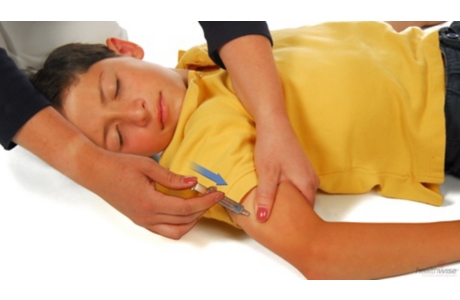Treating Low Blood Sugar
Topic Overview
Review the symptoms of low blood sugar if you have diabetes or some other health condition that can cause low blood sugar. Symptoms of low blood sugar include sweating, blurred vision, and confusion. Know the early symptoms. You may not always have the same symptoms.
Share treatment instructions with your partner, coworkers, and friends in case you are too weak or confused to treat your low blood sugar. If your child has diabetes, give this information to teachers, coaches, and other school staff.
When you have low blood sugar, remember the “rule of 15”:
- Check your blood sugar if you think it may be low, such as below 70 mg/dL.
- Eat about 15 grams of carbohydrate from quick-sugar food. If you are at home, you will probably already have something close at hand that contains sugar, such as table sugar or fruit juice. Carry some hard candy or glucose tablets with you when you are away from home. Liquids will raise your blood sugar faster than solid foods.
- Wait about 15 minutes after eating the 15 grams of carbohydrate. Check your blood sugar level again. If your blood sugar is still below 70 mg/dL, eat another 15 grams of carbohydrate from quick-sugar food. Repeat 15 grams of fast-acting carbohydrate every 15 minutes until your blood sugar is in a safe target range, such as 70 mg/dL or higher. When your blood sugar returns to your target range, eat a small snack if your next planned meal or snack is more than a few hours away.
- But if your blood sugar continues to be below 70 mg/dL or you are getting more sleepy and less alert, call 911 or other emergency services immediately. If possible, have someone stay with you until your blood sugar is above 70 mg/dL or until emergency help arrives.
Information for family, friends, and coworkers
Use the following information to help someone who is too weak or confused to treat his or her low blood sugar.
If the person is taking medicine that can continue to cause low blood sugar, stay with the person for a few hours after his or her blood sugar level has returned to the target range.
- Make sure the person can swallow.
- Lift the person’s head so that it will be easier for the person to swallow.
- Give the person ½ teaspoon of water to swallow.
- If the person can swallow the water without choking or coughing:
- Give him or her about 15 grams of fast-acting carbohydrate, such as 4 fl oz (118 mL) to 6 fl oz (177 mL) of liquid (juice or regular soda pop).
- Wait about 15 minutes.
- If a blood sugar meter is available, check the person’s blood sugar level.
- Offer the person another 15 grams of fast-acting carbohydrate if he or she is feeling better but still has some symptoms of low blood sugar.
- Wait about 15 minutes. If possible, check the blood sugar level again.
- If the person becomes more sleepy or lethargic, call 911 or other emergency services.
- Stay with the person until his or her blood sugar level is 70 milligrams per deciliter (mg/dL) or higher or until emergency help comes.
- If the person chokes or coughs on the water, or if the person is unconscious:
- Do not try to give the person foods or liquids, because they could be inhaled. This is dangerous.
- Turn the person on his or her side, and make sure the airway is not blocked.
- Prepare a shot of glucagon, and give the person the shot if one is available. Follow the directions given with the glucagon medicine.
- After you give the glucagon shot, immediately call 911 for emergency care.
- If emergency help has not arrived within 5 minutes and the person is unconscious, give another glucagon shot.
- Stay with the person until emergency help comes.
Health Tools
Health Tools help you make wise health decisions or take action to improve your health.
Current as of: April 16, 2019
Author: Healthwise Staff
Medical Review:E. Gregory Thompson MD – Internal Medicine & Kathleen Romito MD – Family Medicine & Adam Husney MD – Family Medicine & Rhonda O’Brien MS, RD, CDE – Certified Diabetes Educator
This information does not replace the advice of a doctor. Healthwise, Incorporated, disclaims any warranty or liability for your use of this information. Your use of this information means that you agree to the Terms of Use. Learn how we develop our content.



